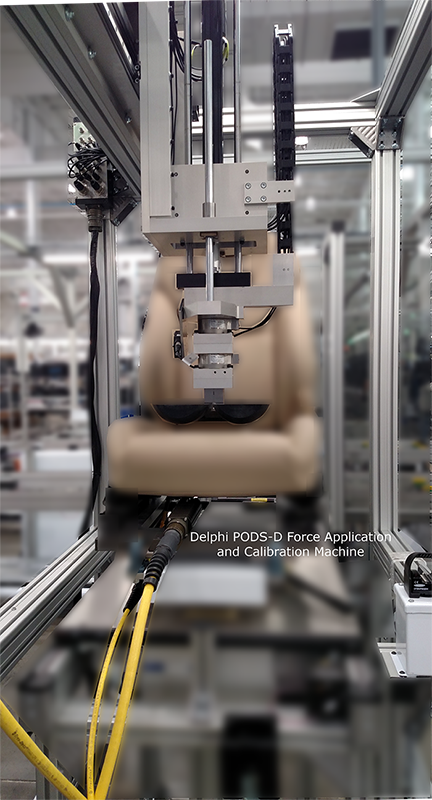Testing Technology
LM3’s experience and mastering of various testing technology has been the hallmark of its achievement in the automobile industry. Currently on its fifth generation of function tester, LM3 combines the facility of a reduced yet durable hardware system with the flexibility and adaptability of its generalized test sequencer capable of both Delphi PODS calibration and end of line function testing. See our software products offerings for a more detailed review of our products and solutions.
Through years of innovation and expertise, LM3’s current model of function tester panels utilizes the efficiency of a reduced footprint and improved modularity while keeping the controls in a standard control box in order to greatly facilitate maintenance. The current version, its fifth iteration, possesses hardware capable of advanced end of line function testing, as well as Delphi PODS calibration all on a unified platform. This current version also provides two software options: LM3’s legacy Labview seat function or PODS testing software and our more flexible end of line testing sequencer.
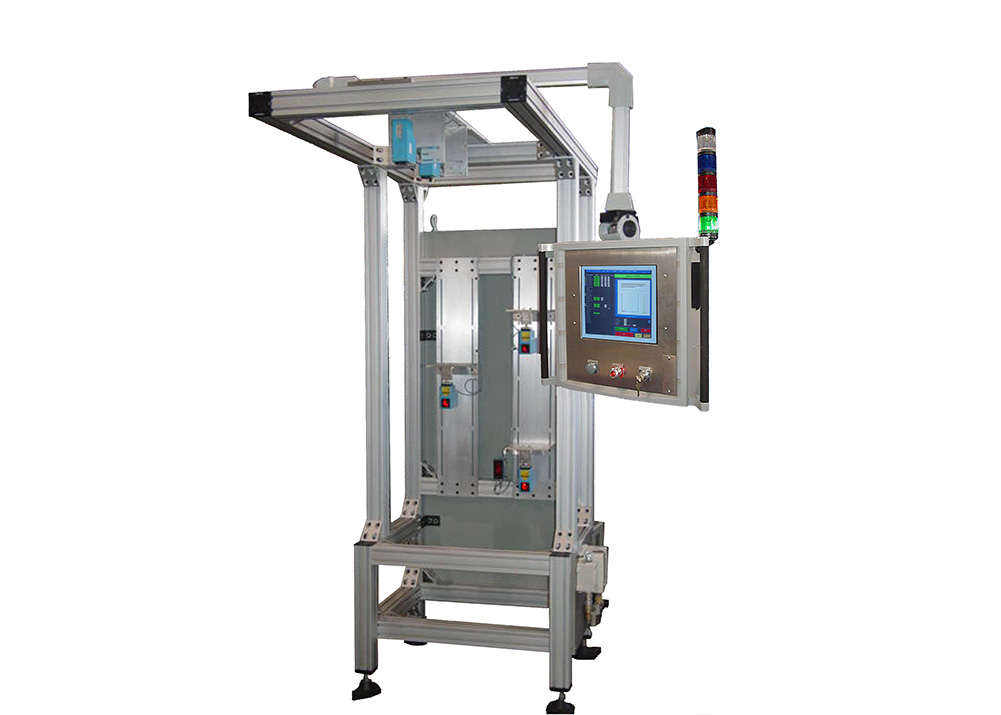
Features And Specifications
Features
The reduced size of LM3’s current function tester hardware allows for simple mounting on the overhead structure of conveyor lines to eliminate the necessity for additional storage and/or production space to house the tester. The newest version of LM3’s function tester works seamlessly with continuous or stop and go conveyor lines. Main controls and breakout boxes measure at a minimal size of 760x600mm, combining efficiency with performance. LM3 has also developed a custom circuit board for squib based air bag testing, as well as custom circuit boards for signal conditioning, emulation, and multiplexing. The custom circuit board is currently on its third generation, which includes other integrated circuits for testing common devices for car seat manufacturing.
- Emulation circuit boards and hardware for sub-assembly testing
- Conditioning boards for unique analog measurements
- Hardware interfaces and breakout boards for accessing IO signals on embedded controllers
- RS485 communications based multiplexing boards with built in system test circuits
- Adapter hardware to connect disparate control systems
- Handheld devices for parts presence and custom poka yoke mechanisms
- Photoelectric sensor, laser sensor, and vision systems for parts presence, conformity, and/or placement applications
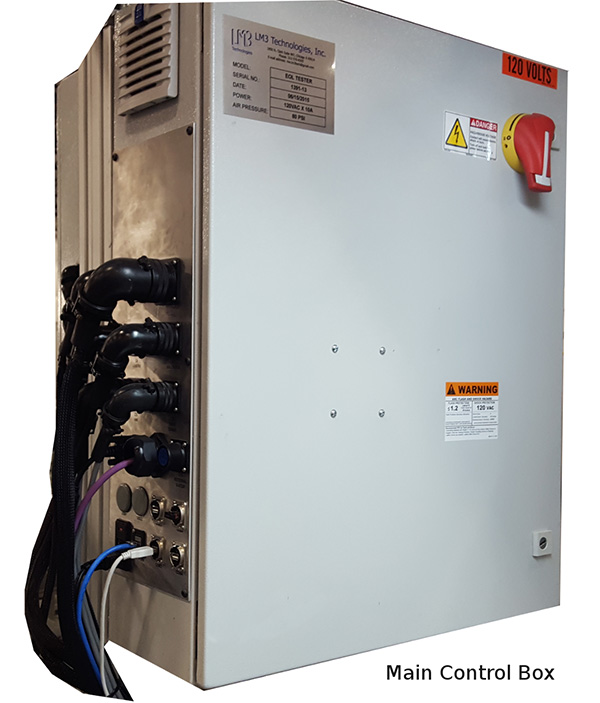
Specifications
- Main controls housed in a Rittal 760x600mm box at an overall weight of 75lbs. LM3 is also working on a 19” rack mount design of its main controls system.
- Data acquisition device NI cDAQ by default but PLC controllers such as Rockwell’s Contrologix or Siemens S7 can be implemented instead.
- 8 channels of ±10 V input with 500 kS/s sample rate with the ability for expansion to 32 channels for performing the following measurement types standard:
- ±10 V inputs for general transducer measurements
- 0-10Ohm 4-wire resistance measurement channel with 5mA x 5v regulated current source for pyrotechnique(air bag) device functionality tests
- 0-10kOhm 2-wire resistance measurement channel with a .5mA x 5v regulated current source for resistive transducer signals
- 0-40mA measuring channel with 12volt regulated power supply for measuring low current transducer signals
- 0-30A hall effect current transducer for high current measurements for resistive coil and motor current draw measurements
- Half voltage divider for verifying power sources prior to use for testing the functionality of a device
- 8 channels of 0-20mA for current transducers including lasers
- 24 digital inputs and outputs for general machine and relay control for test channel routing
- NI’s XNet based vehicle communication bus interfaces for multi-protocol CAN and LIN communications
- AVT-718&852 interface boxes to expand vehicle communications capabilities to K-Line, and J1850
- 4 bridge channels at 50 kS/s with 24-bit resolution for strain gauge measurements for force testing including Delphi PODS
- 4 ±10 V analog outputs for motion control for force testing applications
- Capable of numerous alternative acquisition requirements based on NI’s cDAQ platform
- Device under test(DUT) customization is done through a breakout box capable of multiplexing listed test channels to multiple connections
- Software packages include sequencer based test management system along with various stand alone applications for specific product type testing
- DUT Fixturing options include:
- Online with or without a lift station
- Offline cart loaded machine with a lift and auto-docking connectors
- Offline with simple table fixture for rework
- Part number entry and conveyor interfaces include:
- Siemens Profibus interface
- Allen Bradley SLC or Contrologix direct Ethernet/IP communications
- Bar code scanning
- Data storage and printing include:
- Ability to print results to a label or standard printer
- SQL data storage of traceability results
- Simple flat file results reporting
- Multilayered and high amperage trace circuit boards for custom emulation based testing applications and multiplexing
- Proven communications standards and protocol development for custom embedded controls design
- Short circuit and high voltage surge protection on circuit boards running in harsh 24/7 manufacturing environments
- 3D modeled handheld devices for unique poka yoke requirements
- NI, Keyence, SICK, Cognex and Banner Engineering vision system and sensors for parts presence and conformity applications
- Adapter hardware protocol development to adapt any control control component to work with your existing control system
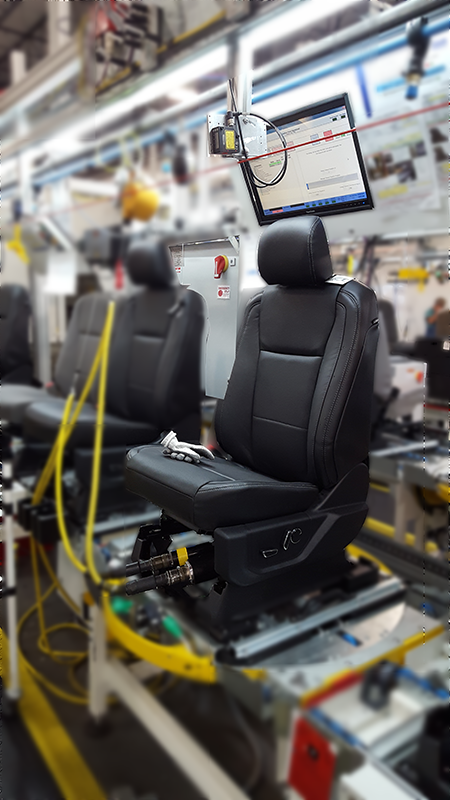
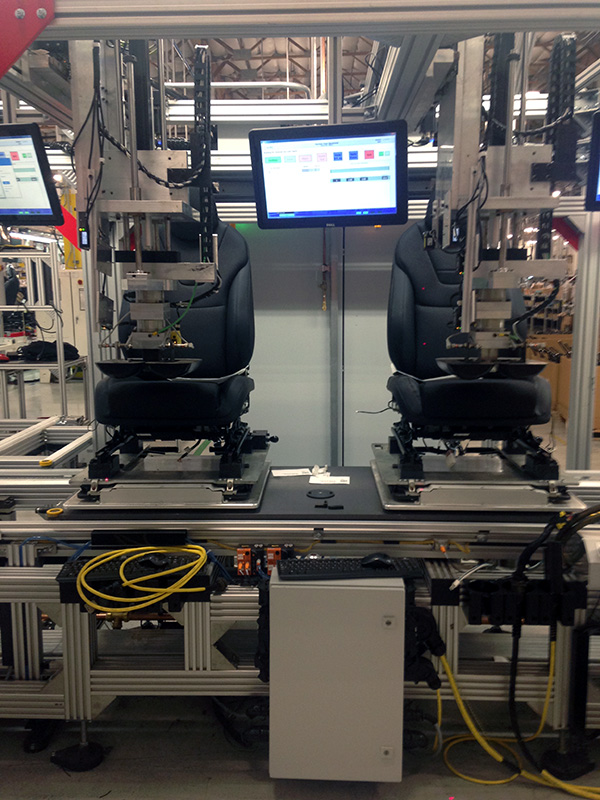
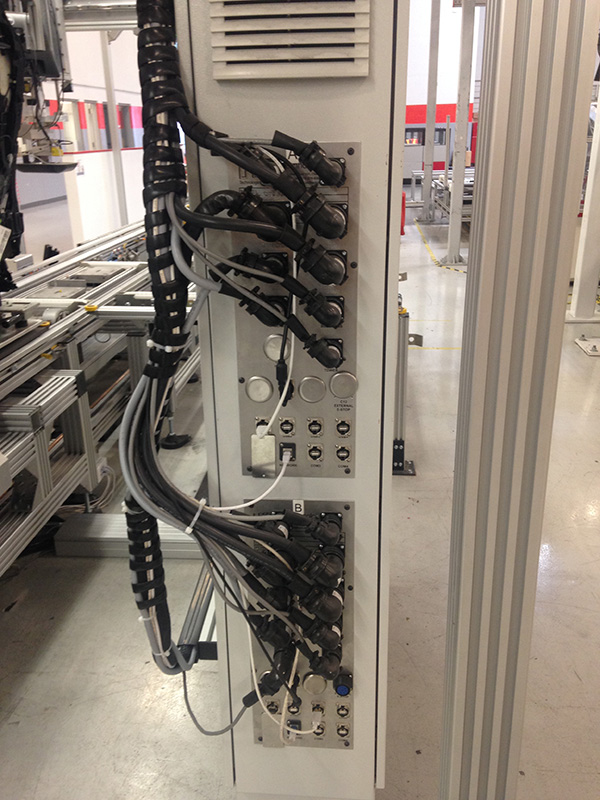
Applications
Whether it requires custom software or our standard function testing software packages, LM3 is capable of testing the following applications in combination:
- Online/offline component or full assembly production and lab based testing.
- Electrical testing for proof of functionality.
- Force testing to determining effort to actuate adjusters including but not limited to track, recliners, and head rests.
- Pneumatic leak (pressure decay) and flow based testing.
- Power adjuster positioning and functionality testers.
- Delphi PODS testing
- WDM (weight drop machine) for non-Delphi based OCS (occupant classification systems) .
- Sound and vibration testing.
- Vision systems for part presence and conformity testing.
- Hand held poka yoke tools which integrate with our standard testing software without the need for additional coding or directly with your conveyor controller.
LM3 Technologies, Inc. has leveraged its expertise in custom hardware solutions to ensure a Six Sigma approach to the elimination of defects. The following examples demonstrate the use of this expertise in the production environment:
- Mirror, pedal, and steering column emulation hardware for testing all circuits controlled by the memory seat module(MSM)
- Climate control system emulation for testing dual climate control modules (DCCM)
- Analog to digital converter board for outputting a discrete signal to a PLC for each state of a multi-state but defined analog signal such as a current limiting or resistive seat belt buck sensor(SBS)
- Interface board for breaking out and conditioning the IO on NI’s Compact Vision System(CVS)
- Multiplexer system for switching up to 192 test channels for DUT with a high density of test circuits
- Handheld haptic motor test mechanism utilizing accelerometers to detect the correct routing of the harness connections in order to verify the correct motor is activated for safety purposes
- Handheld device controls for adapting sensors on device to compatible signal for integrating with conveyor or machine controller
- Vision based tester accessory for detecting the presence of an e-clip on a sub-assembly

